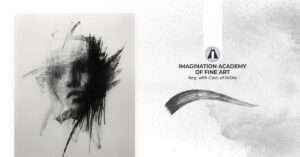Painting a portrait in oils has long been one of the most popular methods to express oneself as an artist. They have remained one of the most popular types of paint because of their versatility and quality. Portraits of famous and not-so-famous people in oil paint adorn the walls of art galleries. To fill youngsters with confidence, various artists host webinars and give oil painting classes in Dehradun.
Some people believe that oil painting cannot be done at home. This is not correct, but one must remain cautious. The solvents needed to dilute the paint and clean your brushes, as well as the oil paints themselves, are both hazardous. So, it’s better to locate yourself outside or in a well-ventilated environment. When working with paints, the use of latex or nitrile gloves is a good idea because some contain hazardous compounds that may be absorbed through the skin.
To paint a portrait in oil one should begin with simply a few basic colors. This will allow you to experiment with color-mixing more, giving you a strong sense of the properties of oil paints. Then go to other colors once you’ve mastered the fundamentals of oil painting.
While learning how to paint oil on canvas, there’s one step you shouldn’t miss and that is the use of gesso. Oil paint is thick, and if you don’t use gesso beforehand, the oils will flow into your canvas or other surfaces. This not only affects the appearance of your completed artwork but can also cause the canvas to degrade over time.
After you’ve prepped your canvas, you’re ready to begin the oil painting process. When working with oil paints, it’s typical to start by coating the canvas in a thin wash of the hue that will form the basis of the painting. Then, by using a pencil or a light coat of black paint, roughly draw the prominent forms, lines, and focal points into the canvas.
After that, you’re ready to start mixing colors. Color mixing techniques should be used to oil paints in the same way as they would to other forms of pigment. By adding solvent or linseed oil to the paint from the tube, you may thin it to get a distinct look.
After you’ve prepared your painting, you’ll need to build up the paint and color. To avoid cracking, always apply thinner paints first, followed by oilier coats.
Usually, it takes three months for the paint to dry. However, it may take longer than that depending on the thickness of the paint.
We hope that this article provided some useful oil painting tips as well as guidance on how to utilize oil paints to get the greatest effects in your artwork. To learn more about oil painting, join Imagination Academy of Fine Art. As the best fine art institute in Dehradun, Imagination Academy of Fine Art has got a well-known reputation for giving oil painting classes in Dehradun.




